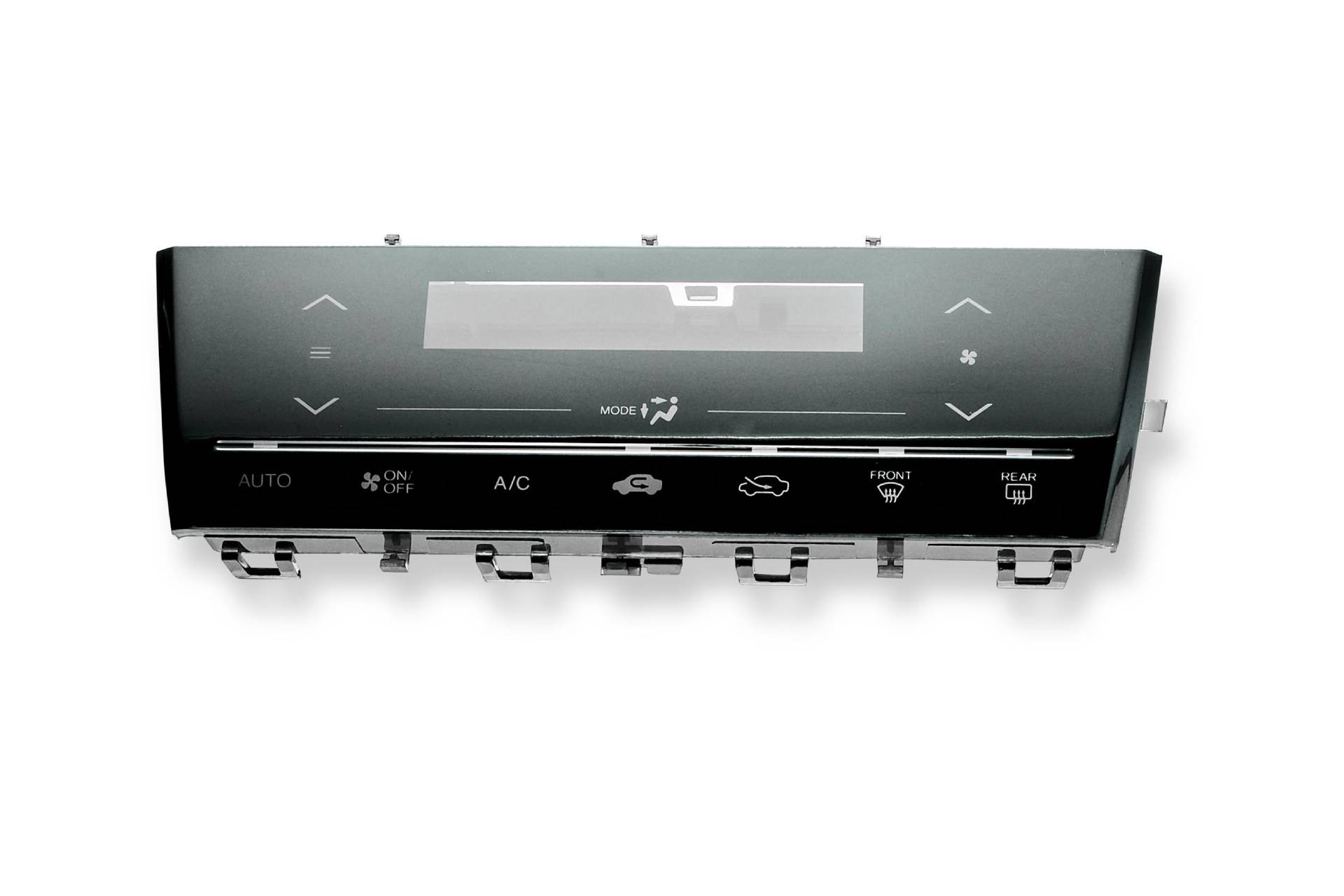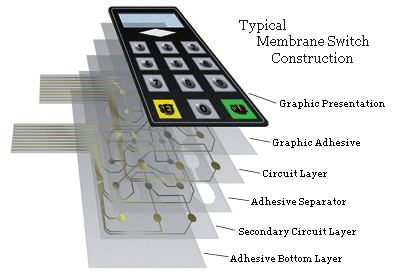All About Membrane Layer Change: Comprehending Its Style and Capability
When you assume regarding the control user interfaces in contemporary devices, membrane layer buttons commonly come to mind. Let's explore what collections membrane layer switches over apart from various other control systems.
What Are Membrane Layer Switches?

Membrane switches can additionally be customized pertaining to form, dimension, and graphics, enabling producers to produce special interfaces customized to details items. Generally, membrane layer switches play a substantial duty in enhancing user experience throughout a broad variety of applications.
Just How Membrane Changes Job
When you press a trick on a membrane layer switch, it triggers a simple yet effective system. membrane switch manufacturer. The top layer, often made of flexible material, pushes down onto a conductive layer under it.
You'll observe that the responsive comments varies based on the switch layout, using either a soft click or a much more obvious feedback. Once you launch the key, the membrane go back to its original placement, reopening the circuit and stopping the signal. This procedure takes place virtually immediately, guaranteeing a responsive individual experience.
Membrane switches are prominent because of their resilience and resistance to dust and moisture, making them optimal for various applications, from family home appliances to clinical tools. Recognizing this operation assists you appreciate their widespread use.
Key Components of Membrane Layer Buttons
Comprehending the key elements of membrane layer switches is essential for grasping their performance and design. The safety layer guards versus ecological aspects and use, extending the switch's life expectancy. By understanding these parts, you'll acquire understanding right into just how membrane layer changes run and their significance in various applications.
Products Used in Membrane Switch Over Layout
The performance and longevity of membrane layer changes greatly rely on the products used in their layout. You usually experience polyester and polycarbonate as primary substratums because of their superb strength and adaptability. These products withstand scrapes and chemicals, making them perfect for requiring environments.
The conductive layers typically make use of silver or carbon, chosen for their dependability and conductivity. membrane switch manufacturer. Silver offers remarkable performance, while carbon is a cost-efficient choice. For the overlay, you might take into consideration a matte or shiny coating, depending upon your aesthetic needs and individual experience
Make particular to choose adhesives that endure ecological factors like temperature and humidity. Selecting the ideal products will guarantee your membrane button stands the examination of time.
Style Factors To Consider for Membrane Layer Buttons
While designing membrane layer switches, it's vital to take into account numerous elements that influence their functionality and customer experience. Beginning by focusing on the design and button dimension; make specific they're intuitive and easy to browse. Consider the tactile responses you intend to offer-- will users need a noticeable click or a softer touch? Furthermore, believe about the products you'll make use of, as they'll impact resilience and looks.
Do not forget the graphic layout; clear labeling and color contrast are considerable for presence. Verify your style suits environmental elements, like wetness or temperature variations, which can influence performance. Bear in mind the relevance of screening prototypes with genuine users to collect responses and make needed modifications. This repetitive process helps you refine the layout, validating it fulfills both practical and visual needs properly. By very carefully taking into consideration these components, you'll produce a membrane button that enhances usability and complete satisfaction.
Applications of Membrane Layer Buttons
Membrane layer buttons are flexible elements found in various applications, from industrial tools to consumer electronics. You'll see their influence in devices that require durable user interfaces and in devices that gain from smooth designs. Recognizing these applications aids you appreciate the capability and practicality of membrane buttons in day-to-day technology.
Industrial Tools Usage
When you're aiming to enhance the performance of commercial tools, membrane switches use a dependable service that integrates sturdiness with straightforward layout. These buttons are best for harsh atmospheres, giving resistance to dust, moisture, and chemicals. You'll find them in control panels for manufacturing machines, HVAC systems, and clinical gadgets, where accuracy and have a peek at this website responsiveness are crucial. Their reduced profile implies they fit perfectly into numerous tools, saving valuable area while preserving convenience of use. With personalized graphics and backlighting choices, you can create an intuitive interface for operators, improving effectiveness and safety and security. Plus, their lengthy lifespan minimizes maintenance prices, making them a smart investment for your industrial applications. Welcome membrane layer buttons to improve your procedures and enhance general performance.
Customer Electronics Assimilation
In the domain name of consumer electronics, membrane layer switches play a necessary function in enhancing individual communication and tool capability. Membrane buttons likewise ensure toughness and resistance to dust and moisture, expanding the life-span of your electronic devices. By choosing membrane layer buttons, you enhance not simply the functionality but also the style of your tools, making day-to-day interactions smooth and delightful.
Advantages and Downsides of Membrane Switches
While membrane layer switches use a variety of advantages, they also include some disadvantages that you need to consider. One substantial advantage is their portable design, making them excellent for space-constrained applications. They're likewise economical, supplying a resilient remedy with a reduced production price. On top of that, their smooth surface is very easy to tidy, improving health in environments like medical facilities.

Membrane layer buttons can have a much shorter life-span compared to mechanical switches, specifically under hefty usage. They can additionally be less responsive, which may affect individual feedback throughout procedure. Balancing these pros and disadvantages will aid you determine if membrane layer switches are the appropriate fit for your task.
Regularly Asked Questions
For How Long Do Membrane Switches Over Commonly Last?
Membrane switches commonly last in between 5 to ten my company years, depending on use and environmental conditions. You'll intend to examine aspects like wear, exposure to wetness, and temperature variations to evaluate their long life efficiently.
Can Membrane Layer Switches Over Be Customized for Certain Designs?
Yes, you can personalize membrane layer switches to fit certain styles (membrane switch manufacturer). You'll have the flexibility to choose shades, shapes, and formats that match your job's demands, guaranteeing they mix effortlessly with your overall visual
What Is the Cost Range for Membrane Change Production?
The price range for membrane switch production commonly falls in between $1 and $10 per system, depending upon factors like style intricacy, quantity, and products. You can obtain quotes from producers to discover the most effective option.

Are Membrane Layer Switches Water-proof or Immune?
Membrane buttons can be made to be water-proof or immune, depending on products used and building and construction techniques. If you require them for wet environments, assure you define those demands throughout the style procedure.
Just How Do Membrane Changes Contrast to Standard Switches?
Membrane switches are normally thinner and a lot more adaptable than typical switches, supplying a sleek design. They're typically less complicated to clean and integrate, however might not give the tactile comments you're utilized to with mechanical choices.
Conclusion
